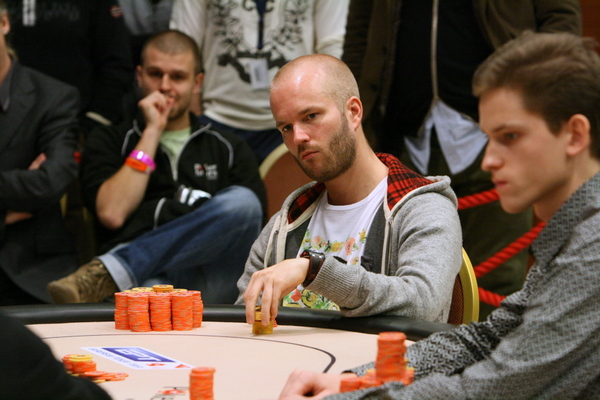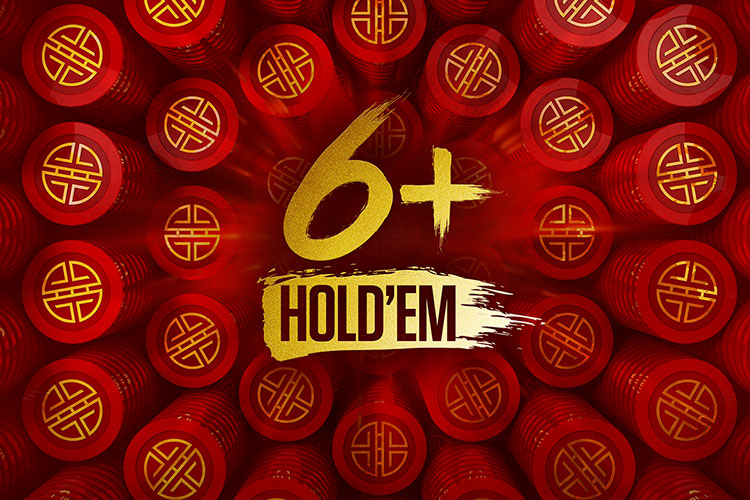Poker Short Deck Strategy
Short Deck, or 6+ Hold’em as it’s sometimes known, is the game of choice for the high stakes cash games and tournament specialists around the world.Check out the GGPoker lobby and you’ll see daily tournaments with $10,000 buy-ins that are frequented by the game’s superstars. Short Deck Poker Strategy is one of the newest domains in which I currently conduct research at the Cardquant Institute. During the course of my research I have identified some essential concepts that enable a player new to Triton Holdem to. Jan 15, 2019 There are several poker variations developing recently, and today it’s time to talk about Short Deck Poker and why to play it online. As the name suggests, this game has less cards. All the 2s, 3s, 4s and 5s are removed, so the deck is left with just 36 cards. This creates a more interesting and action packed game.
Short deck NL hold’em - also known as 6-plus hold’em - is currently enjoying another ramp up in popularity. Three or four years ago, it appeared in the public eye for the first time when the likes of Phil Ivey and Tom Dwan were reportedly playing it in nosebleed live cash games around Asia against rich businessmen.
Many players have said it’s almost a hybrid of NL and PLO because of how close the equities tend to run together. A consequence of this is that all in clashes pre-flop are much more common. Perhaps more suitable for somebody looking for mobile no deposit free spins than a seasoned poker player.

This is all because the deuces through fives are removed from the deck, leaving only 36 cards. We might be forgiven for thinking little would change, but in fact, the hand rankings are quite different. A flush now beats a full house, and three of a kind sits in front of a straight!
Why Short Deck Is an Action Game
With the hand rankings changing around slightly, we can also see that the chances of making your draw are different too.
Obviously you still have eight outs to complete a straight draw, but instead of digging through 47 cards to hit jackpot, there are now only 31 to contend with. Now we will hit our straight more than 45% of the time.
Already we have seen that a flush is rarer than a full house, but we will still complete the draw more than 30% of the time, in comparison to 36% in normal NL hold’em.
Another Rule Change
Savvy players of standard NL hold’em will be familiar with what is known as “the rule of two and four”. In short deck games we must switch to “the rule of three and six”.
To clarify for newer players, what we mean is on the flop we can multiply our outs by six and the result is our equity, or on the turn we multiply our outs by three to know our equity.
Don’t Be Deceived By So Many Strong Hands
With only 630 starting hands possible compared to the usual 1326, we can expect to see powerhouse starting hands much more frequently. For example, pocket aces will arrive in front of you every around once every 100 hands, instead of every 221 using a full deck. Ace-king is also seen twice as often.
The problem here is that it actually becomes quite deceiving in terms of absolute strength versus relative strength. This can be illustrated by thinking about how well we view two broadway cards in normal hold’em - it’s a fairly decent hand right? Playing short deck rules we will be dealt such a hand close to one third of the time!
An Illustrative Hand
This hand illustrates the wildly different pre flop equities we witness when playing short deck hold’em. It comes from the recent Triton Poker Series in Jeju, South Korea, during a Short Deck Ante Only tournament.
The antes are 3,000 each hand,except the button who pays 6,000.
UTG limps with pocket aces and the HJ raises it up to 25,000 with AcQd. The CO calls with Js9s and while the BTN considers his move we get to see what the equities are.
UTG - AA - 30%
What Is Short Deck Poker
HJ - AQo - 12%
CO - J9s - 32%

BTN - 22%
So J9s is actually a favourite over pocket rockets in a four-way pot. Usually, the results wouldn’t look like this. Here is what we would usually see.
UTG - AA - 55%
HJ - AQo - 5%
CO - J9s - 19%
BTN - 21%
In the end, the BTN0 folds preflop and UTG then completes his original plan by jamming all-in. This how the match ups look now.
UTG - AA - 49% - 263,000
HJ - AQo - 12% - 71,000
CO - J9s - 34% - 54,000

Why Should We Play Short Deck Rules?
For a start, action games always attract players who are prepared to gamble it up. This is not only good for your overall enjoyment, but it increases potential profit too. It’s also good to get involved with new games while everyone is still finding their feet. The best players at each stake level will not have had much time to increase their edge over everyone else. There’s also not much information out there yet, making it a much closer contest.
Stars such as Phil Ivey heartily endorse the game. He told the media:
I started playing Short Deck recently, it has quickly become one of my favorite games. I enjoy playing it. It's fun, it's something different, it's new and there's a lot of gambling involved. The equities run pretty close, so it's pretty easy to get your money in the middle and be 50/50 or somewhere near that. It suits a more gambling style of player.'
What is Short Deck Poker?
If you take out from a deck the 2’s, 3’s, 4’s, and 5’s, you end up with a short deck of 36 cards. Playing poker variants with a short deck is what short-deck poker is all about. This simple modification changes a lot. First, it alters the hand ranking, as the likelihood of making different hands changes. Even more, playing with a short deck changes the dynamics and makes for action-packed variants like 6+ Holdem that is gaining popularity fast across the world!
You can play many poker variants using a short deck, but the most popular is Short Deck Holdem (or 6+ Holdem). Six-Plus Holdem resembles no-limit Holdem but is played with a short deck.
Packed with action, 6+ Holdem is an exciting variation that has captured the interest of many poker pros, like Tom Dwan and Phil Ivey, and has been introduced in major poker sites, like Pokerstars and Partypoker, and even in the World Series of Poker.
Who invented short deck poker?
It is a general consensus that short stack poker originated in China. However, variants of the game have been also played in Greece, called Poka, using a deck of 32-40 cards and a modified hand ranking. The game gained popularity across the world since 2015, when Phil Ivey and Tom Dwan embraced 6+ Holdem, the Texas Holdem short deck equivalent, and promoted it.
What are the rules of Six-Plus Holdem?
In 6+ Holdem, the rules are very similar to regular Holdem. Each player is dealt two hole cards, and five community cards are dealt in three stages; three on the flop, one on the turn, and one on the river. Each step is accompanied by a betting round.
If the hand goes to showdown, the payer having the best possible five-card hand, using any combination of his hole cards and the community cards, wins the pot.
If you are unfamiliar with any of the specifics of the action and betting, you can check out here the rules for Texas Holdem.
However, there are some important differences in the rules that you need to know.
Flushes rank higher than full-houses
First and foremost, you must be careful as the hand rankings differ from the typical full deck hand rankings! This derives from the fact that, with a short deck, the likelihood of making various hands changes. Be careful, though, because the ranking rules may differ from place to place.
Flushes are more scarce than full-houses, and they rank higher in most casinos. Also, three-of-a-kind is rarer than a straight by the river (on the flop it is easier). However, in most cases, straights rank higher than three-of-a-kind.
Bellow is the hand ranking used in many poker sites, like Pokerstars and Partypoker, that was also used in the 2019 World Series Of Poker, Short Deck No-Limit Hold’em event. Keep in mind that the ranking used is not the same in all poker sites and casinos, so you must be careful!
Modified Hand Rankings for six-plus Holdem
| Rank | Example | Hand Name | Probability |
|---|---|---|---|
| 1 | A♥K♥Q♥J♥T♥ | Royal Flush | 0.02% |
| 2 | Q♣J♣T♣9♣8♣ | Straight Flush | 0.11% |
| 3 | Q♠Q♣Q♦Q♥A♠ | Four of a Kind | 0.57% |
| 4 | A♦J♦9♦8♦6♦ | Flush | 2.12% |
| 5 | 9♠9♣9♦J♠J♥ | Full House | 7.59% |
| 6 | 9♣8♥7♠6♠A♥ | Straight | 14.14% |
| 7 | 9♣9♥9♦7♥6♠ | Three of a Kind | 7.25% |
| 8 | A♣A♥T♣T♦7♦ | Two Pair | 38.3% |
| 9 | K♣K♥J♠T♥6♦ | One Pair | 27.74% |
| 10 | A♥K♣J♠9♦7♦ | High Card | 2.81% |
Antes and a Button Blind
Another important difference lies in the structure of the forced bets. Again, there is no standard structure, and the forced bets may differ in various poker sites and casinos. However, it is common to see an ante and a button blind, instead of a small and big blind structure. In this case, the player at the left of the button acts first preflop.
Aces can still make low straights!
Like in standard Holdem, aces can make the highest possible straight, and the lowest. So, in 6+ Holdem, 9876A also counts, and is the lowest possible straight!
Let’s take a look at some basic strategic considerations
Hand Value is Different
The first thing to notice is that it is much easier to make big hands, like full houses and even quads! Waiting to make quads in full deck Holdem can take for ages. However, in short deck poker, making monster hands is not that rare! This is the main reason that makes the game fun and the action fast!
Poker Short Deck Strategy Plans
In theory, making strong hands should not affect the action. You will still make a 10% or better hand, well, 10% of the time. However, reality differs.
In Texas Holdem, more often than not, players miss the flop, and the action becomes limited. It is easier to let go of your hand when you flop little or nothing, like a high card or bottom pair. In contrast, in 6+ Holdem, mediocre hands look better! Therefore, inexperienced players can get carried away and give more action than what is justified.
Draws Change Drastically
The second thing to notice is that draws change drastically! Flush draws become harder to make as you only have five outs to make them (instead of 9). Even if flushes are harder to make, they can break a full-house, and can win huge pots!
On the contrary, straight and full-house draws become easier to make. With straights ranking higher than three-of-a-kind, they become a great hand as it is easier to make and, at the same time, outrank a set. If you have an open-ended straight draw on the flop, you can make it by the river about 45.6% of the time!
Therefore, connected cards and even one-gappers are strong starting hands. Keep in mind that in unpaired boards, it becomes very likely that one or more opponents have a straight, so you should be cautious. Also, don’t forget that a low straight with an ace is possible.
The Rule of 4 and 2, becomes the Rule of 6 and 3
In the tutorial on Counting Poker Outs, we saw that we can use the rule of 4 and 2 to make a quick estimation of the probability that you will hit one of your outs. As in short deck Holdem, there are about two-thirds of cards in the deck to draw from, the probabilities to hit an out are multiplied by a factor of 1.5. Therefore, we can use the same technique to make a quick estimation of the percentage of hitting a draw but use 6 and 3 as multipliers. So,
- With one card to come, multiply your outs by 3 (from flop to turn, or from turn to the river)
- With two cards to come, multiply your outs by 6 (from flop to river, useful in all-in situations when no more betting is to be considered).
Limping becomes an option
In no-limit Holdem, when someone is the first player to put money into the pot voluntarily, he mostly open-raises, and rarely limps. In Short Deck Holdem, open limping with some hands becomes also a viable option, as with the antes you get huge pot odds to try to limp.
Blockers count more!
In Short Stack poker, having a blocker decreases the probability that your opponents will make their hand more than in regular Holdem. With fewer cards in the deck, outs count about 50% more and blockers do too. For example, consider that you have a flush draw on the turn. If your opponent has no blocking cards, you have 5 outs out of 28 remaining cards, or 17.9% chance of making your flush. If he has one card of the suit that you draw to, you now have 4 outs, or about 14.3% chance of making it, significantly less!
The same goes for different types of blockers, like straight blockers.

Pocket pairs go up in value!
Poker Short Deck Strategy Games
In 6-plus Holdem, you get dealt about 46% more often a pocket pair, so about once every 11 or 12 hands. Even more, in Short-Deck Holdem, pocket pairs hit a set or better about 25% of the time (instead of 17% of the time in no-limit Holdem)!